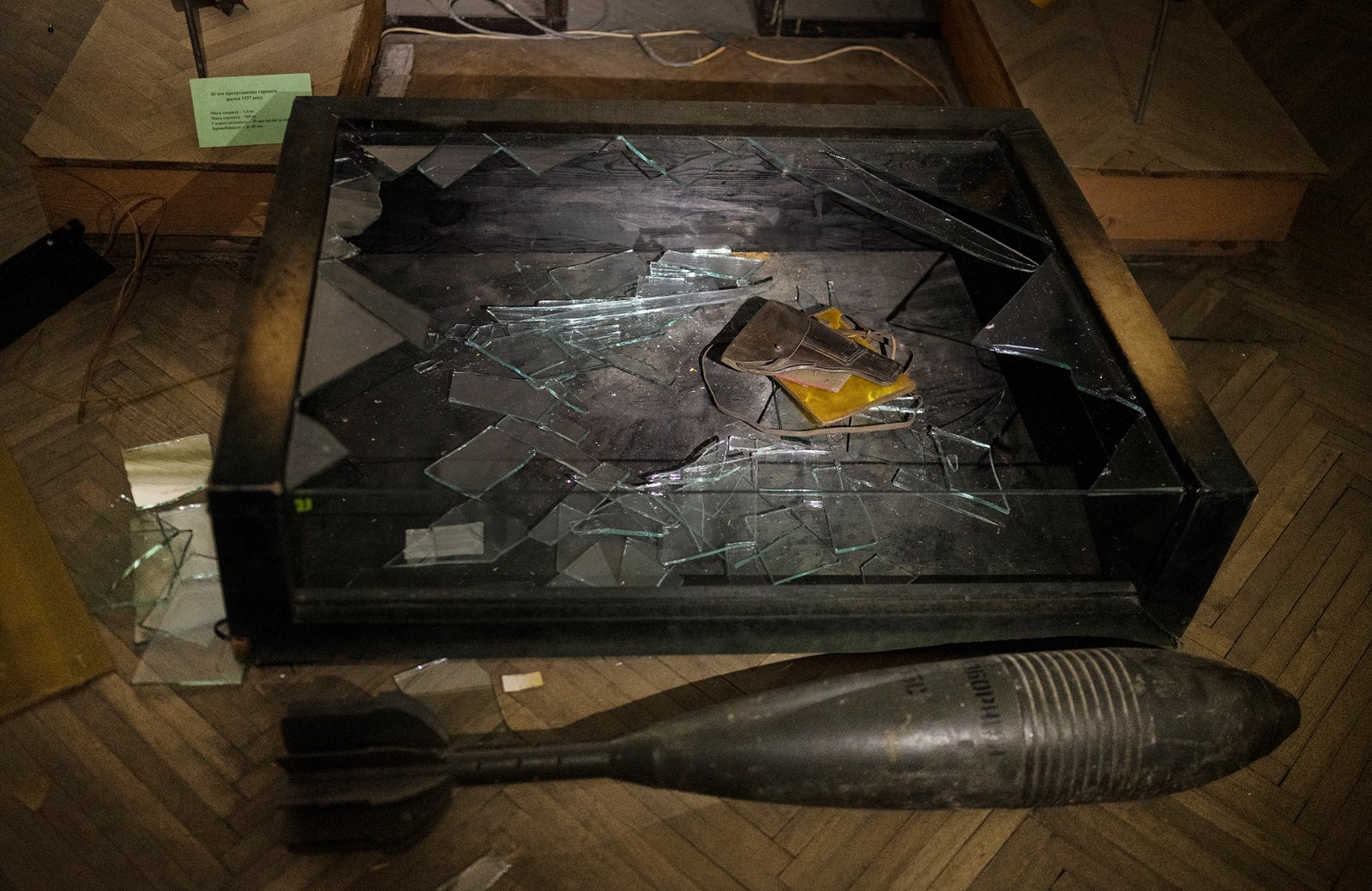
KHERSON, Ukraine >> One morning in late October, Russian forces blocked off a street in downtown Kherson and surrounded a graceful old building with dozens of soldiers.
Five large trucks pulled up. So did a line of military vehicles, ferrying Russian agents who filed in through several doors. It was a carefully planned, highly organized, military-style assault — on an art museum.
Over the next four days, the Kherson Regional Art Museum was cleaned out, witnesses said, with Russian forces “bustling about like insects,” porters wheeling out thousands of paintings, soldiers hastily wrapping them in sheets, art experts barking out orders and packing material flying everywhere.
“They were loading such masterpieces, which there are no more in the world, as if they were garbage,” said the museum’s longtime director, Alina Dotsenko, who recently returned from exile, recounting what employees and witnesses had told her.
When she came back to the museum in early November and grasped how much had been stolen, she said, “I almost lost my mind.”
Kherson. Mariupol. Melitopol. Kakhovsky. Museums of art, history and antiquities.
As Russia has ravaged Ukraine with deadly missile strikes and brutal atrocities on civilians, it has also looted the nation’s cultural institutions of some of the most important and intensely protected contributions of Ukraine and its forebears going back thousands of years.
International art experts say the plundering may be the single biggest collective art heist since the Nazis pillaged Europe in World War II.
In Kherson, in Ukraine’s south, Ukrainian prosecutors and museum administrators say the Russians stole more than 15,000 pieces of fine art and one-of-a-kind artifacts. They dragged bronze statues from parks, lifted books from a riverside scientific library, boxed up the crumbling, 200-year-old bones of Grigory Potemkin, Catherine the Great’s lover, and even stole a raccoon from the zoo, leaving behind a trail of vacant cages, empty pedestals and smashed glass.
Ukrainian officials say that Russian forces have robbed or damaged more than 30 museums — including several in Kherson, which was retaken in November, and others in Mariupol and Melitopol, which remain under Russian occupation. With Ukrainian investigators still cataloging the losses of missing oil paintings, ancient steles, bronze pots, coins, necklaces and busts, the number of reported stolen items is likely to grow.
The plundering is hardly a case of random or opportunistic misbehavior by a few ill-behaved troops, Ukrainian officials and international experts say, or even a desire to turn a quick profit on the black market. Instead, they believe the thefts are a broadside attack on Ukrainian pride, culture and identity, consistent with the imperial attitude of Russian President Vladimir Putin, who has constantly belittled the idea of Ukraine as a separate nation and used that as a central rationale for his invasion.
“It’s not like one soldier putting a silver chalice in his rucksack,” said James Ratcliffe, general counsel of The Art Loss Register, a London-based organization that traces stolen art. “This is a far, far larger scale.”
At one museum in Melitopol, a southern Ukrainian city that the Russians seized in the first days of the war, witnesses said that a mysterious man in a white lab coat had arrived to carefully extract, with gloves and tweezers, the most valuable objects from the collection, including gold pieces from the Scythian empire crafted 2,300 years ago. As he lifted out the priceless antiquities, a squad of Russian soldiers stood firmly behind him, in case anyone should try to stop him.
But even with the war raging, a group of Ukrainian lawyers and art experts are working day and night to collect evidence for what they hope will be future prosecutions of cultural crimes.


 PREVIOUS ARTICLE
PREVIOUS ARTICLE
